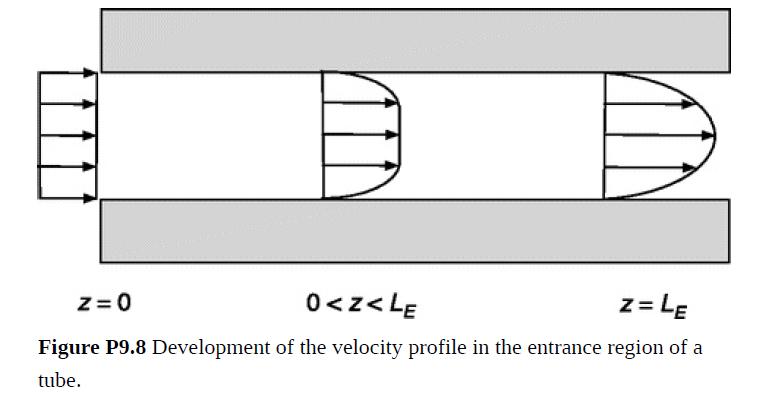In any long pipe or other conduit of constant cross-section the velocity profile eventually becomes fully developed.
Question:
In any long pipe or other conduit of constant cross-section the velocity profile eventually becomes fully developed. The distance from the inlet at which this occurs is the entrance length, LE. Within the entrance region part of the fluid accelerates and part decelerates, depending on the initial velocity profile. If there is plug flow at the inlet, as in Fig. P9.8, the fluid at the center speeds up and that near the wall slows down, until the final parabolic profile is achieved. Accordingly, the inertial terms in the Navier–Stokes equation are not zero, as they are in the fully developed region. The OM estimates of LE discussed below may be compared with the more precise Eq. (12.2-1).
(a) At large Re, what distinguishes the entrance region is that inertia is as important there as viscosity. Assuming that Re ≫ 1, obtain an OM estimate of LE for a tube of radius R with a mean velocity U. The flow in such an entrance region is nearly unidirectional, as in boundary-layer or lubrication flows. Why?
(b) At small Re, inertia will be negligible everywhere. What then distinguishes the entrance region from the fully developed one? Obtain an OM estimate of LE for creeping flow.
Step by Step Answer:

Introduction To Chemical Engineering Fluid Mechanics
ISBN: 9781107123779
1st Edition
Authors: William M. Deen





